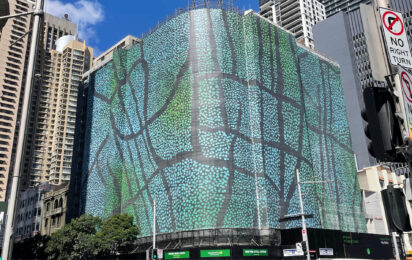Duratec’s technical division implements the latest technology to perform inspection work, often remotely. Here, we take a look at some of the high-tech methods the team employs to capture a structure’s data.
The way we conduct condition assessments has changed markedly over the years. While visual surveys used to be carried out via rope, boom lift, and crane, engineers can now obtain data via remotely operated vehicles (ROVs), thermal imaging and laser scanning, to name just a few techniques. As well as improving safety and reducing costs, such methods offer precise information about a structure and allow Duratec to create a high-resolution, photorealistic 3D model. This ‘digital twin’ then assists in accurately quantifying the volume of remediation work required.
Bespoke camera rigs
Duratec’s technical team can design and custom-make camera rigs to suit specific structures. Down-hole camera rigs are one such system, often used for the visual inspection of the inside of chimneys.
Duratec uses two types of camera rig – one features a compact 360-degree camera and lighting for inspecting vertical spaces down to a 300mm diameter. The other is for larger diameters and uses a full-format camera on a rotating base with 360-degree lighting. It inspects internal surfaces at a 1mm resolution on diameters from six to 24 metres.
ROV and UAV cameras
Remotely operated vehicles (ROVs) and unmanned aerial vehicles (UAVs), such as drones, are commonly used in condition assessments as they can access hard-to-get-to parts of a structure. Other benefits include the collection of more detailed data; a reduction in shutdown time and time spent on site by engineers; increased safety as there is no need to work at heights; and reduced costs from the speed of the process and all-in-one technology.
Remotely controlled boat cameras
Remotely controlled boats are used to inspect wharves, jetties and other marine infrastructure that is too dangerous to access with manned craft. The boat’s camera has a wide-angle lens, which takes images at 1mm resolution. It can capture the entire underside of a structure, allowing engineers to locate spalling, cracks and other defects.
Thermal imaging
Thermal imaging is a non-destructive testing technique that measures the heat across a concrete surface and checks for temperature irregularities. Heat flows more slowly through gaps and delamination, than it does through solid concrete, so changes in temperature could indicate wear points, cracks or water ingress, among other defects.
Laser scanning
Laser scanning can capture data in difficult environments and combine it with information obtained via other means. Types of scanners include airborne scanners, which can operate at 100 feet, and compact survey-grade scanners, which capture data at two million points per second. Mobile laser scanners are also becoming increasingly common.
Precision surveying
Duratec can develop custom survey techniques to obtain millimetre and sub-millimetre measurements. These include close-range photogrammetry, laser tracking and precision levelling. Data obtained can be used for spatial and metrology applications.



